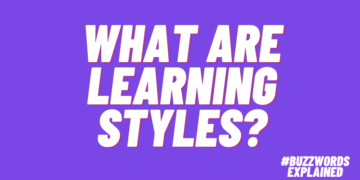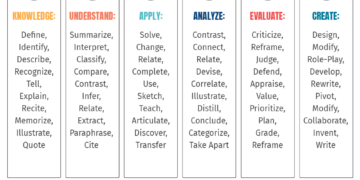Overview:
The integration of AI in education, its challenges, ethical considerations, and potential has the ability to adapt teaching methods to prepare students for the future.
Education never stands still. As an undergraduate, this constant evolution both frightened and fascinated me, especially when one of my professors challenged us to research current slang terms. Standing in front of my peers, delivering an earnest presentation on the words “basic” and “on fleek,” I initially felt ridiculous. Yet even then, I understood the more profound lesson: to truly serve our students, we must remain connected to their world. These days, that world is inundated with AI.
When it comes to curriculum and pedagogy, trends change with the wind. From No Child Left Behind to Common Core and thirty thousand movements in between, the only thing predictable and steady about education is its tendency to change. I choose to believe (possibly from a naivety angle) that these changes stem from a desire to improve the lives of children, and because of that, I am always eager to adopt the latest best practices.
As a fresh-faced college graduate, I started teaching with a focus on gamification of lessons and growth-mindset activities. Everything was project-based and geared towards engagement. Within the next few years, I will emphasize portfolio learning and cross-curricular lessons. Since the COVID-19 pandemic, my lessons have entirely transitioned from involving physical materials to being primarily online. This year, I made a conscious but contentious shift to include artificial intelligence in my instruction.
AI In the Classroom: A Controversial Companion
Integrating artificial intelligence (AI) into the classroom is highly complex. Even within my close circle of colleagues, there is a vast array of opinions. Selfishly, I would love to say that AI will forever be banned in my classroom. I would love to keep all instruction utterly free of technological manipulation because then I don’t have to be concerned about how students might be misusing technology. But if I am genuinely committed to helping students prepare for the world beyond high school, I must look beyond myself and my comfort threshold.
Because of this uncomfortable reality, I have been working to not only use AI as a teacher (if you are a teacher and haven’t experimented with MagicSchool, you’re shorting yourself) but to teach my students how to incorporate AI into their studies ethically. This is entirely new to me, but I wanted to take a minute to share what I have learned.
Student Agency and Ethical AI Use
First of all, with the rise of AI in education, students have to decide that they want to learn. With more traditional education strategies, teachers could take a heavy-handed approach to teaching and almost force students to learn by requiring assignments that could only be completed by the student (or by peers and parents, but still by a human). With AI, students are constantly given ways to usurp their learning process if they choose. When I started talking to my students about AI, the importance of agency in choosing to learn was our first conversation.
The second thing we discussed is the ethics of AI use and plagiarism. Previously, it was simple to have the students avoid plagiarism by citing the resources they used for assignments, and to check for plagiarism, I had only to search the internet for the words/concepts used to see if the work was plagiarized. Because AI creates completely new sources and information with every interaction, checking for plagiarism has become nearly impossible.
Rethinking Homework
Because of this, if I am to require students to complete anything on their own time (outside of my watchful eye), I must either A: trust that they are doing it alone or B: allow the use of AI and not grade work that is completed
outside of the classroom so that homework becomes more personal and study-centered rather than assessment-based.
I have chosen option B. I do not give homework that will be graded. All homework is given as a tool for students to use to build on the skills practiced in class, and students are allowed to use AI in their studies. I will tell you now – this has been a tough adjustment. At the beginning of the school year, I had a plethora of students regularly failing in-class assessments because AI was doing all their studying. They were only learning what I could monitor and were choosing to bypass any sort of struggle on their own. While this was a tough time where we had many come-to-Jesus discussions about the importance of education and the commitment needed for personal betterment (I have never felt more elderly than when I stepped in front of a room full of teenagers to talk to them about their choices), we did survive. Students gradually started to understand the value in the struggle. I noticed that test grades and in-class writing assignment grades rose back to the level of the age before AI. I now see students using AI to brainstorm in ways like asking for ideas for research papers or summarizing complicated passages so that they can understand them and then be able to complete higher-level assignments. This has given me the freedom to give assignments beyond just asking “what” or “who” and into “how” and “why,” and personally, I find this to be much more meaningful instruction.
Not the First, Not the Last: Education’s Long History of Disruption
When we look at AI in education, we have to remember that while this may be to a new degree, we have done this before. Socrates famously said that the rise of a new fangled educational tool would ruin students’ memory. The tool was THE BOOK. This also happened when calculators were invented, and within 5 years of being introduced to the general public, the National Advisory Committee on Mathematical Education recommended that all students be able to use calculators in the classroom. It took the internet less than a decade to move from horrifyingly new to integral in everyday life.
AI is just the next wave of newness that is scary and exciting. As self-proclaimed guardians of the next generation, it is our responsibility to help them be armed and ready to face the world they will meet upon graduation.
In my classroom, I am still ironing out the specifics of rubrics and requirements, but I am excited to say that I am facing this new horizon with an open mind and an eagerness to help my students grow. One thing that I am sure of is that ignoring AI won’t help my students, but guiding them through it just might. How are you helping your students navigate this new terrain?

Dr. Cassidy Swinney is a dedicated educator at Jackson Academy, known for fostering student growth through engaging teaching strategies and insightful feedback. Passionate about literature, Dr. Swinney emphasizes analytical thinking and the real-world application of ideas in her classroom. Beyond her own classroom, Dr. Swinney loves reading, writing, and spending time with her family.




















